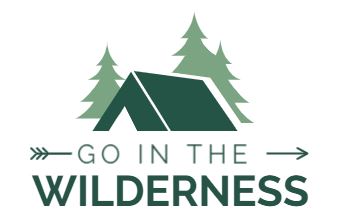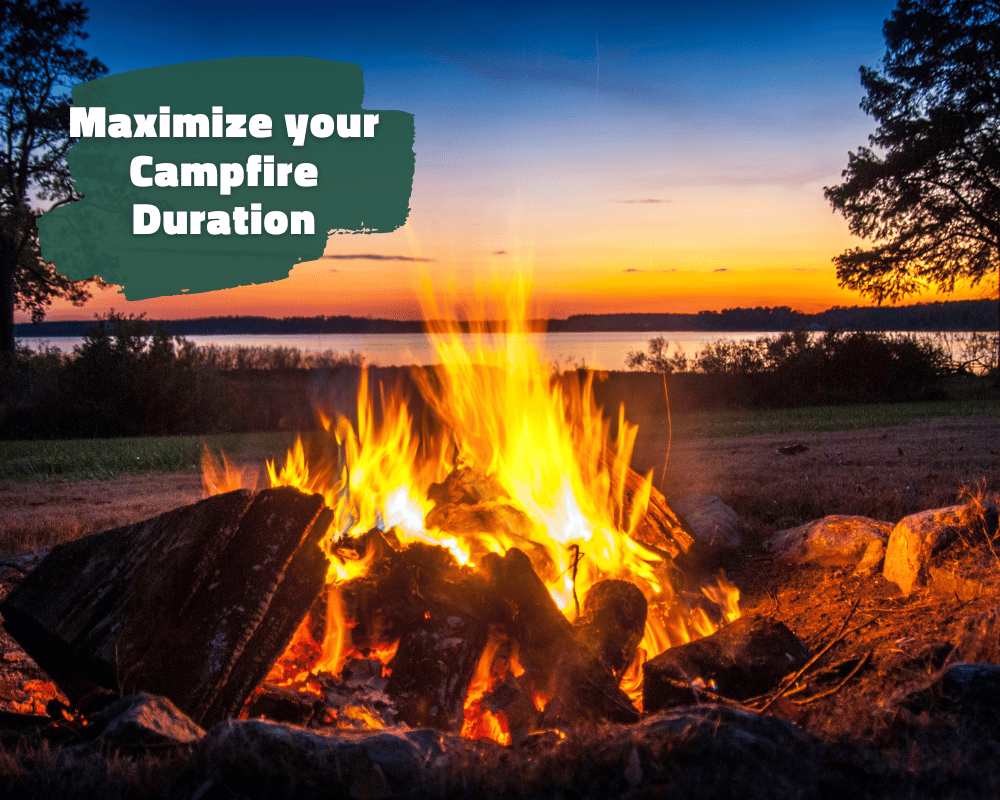Campfires are essential to survival during bushcrafting, especially in cooler climes. They act as a source of heat and light and can be used to cook food. To make sure you get the most out of a campfire, you need to learn some techniques to maintain a long-lasting flame. A campfire is no use if it just fizzles out in the middle of the night!
For this reason, we’ve created the ultimate guide to teach you and fellow bushcrafters how to maximize the duration of a campfire. Let’s begin.
Factors Affecting the Duration of a Campfire
Before you get to know how to make a campfire last longer in the wild, you should first know which factors affect how long a fire burns for. A general rule that campers and bushcrafters follow is that half-an-inch of wood will burn for approximately an hour—but, in a real bushcraft setting, this can vary according to the size and shape of the fire, the type of wood used, and environmental conditions. Let’s now take a closer look at those three factors affecting a campfire’s duration.
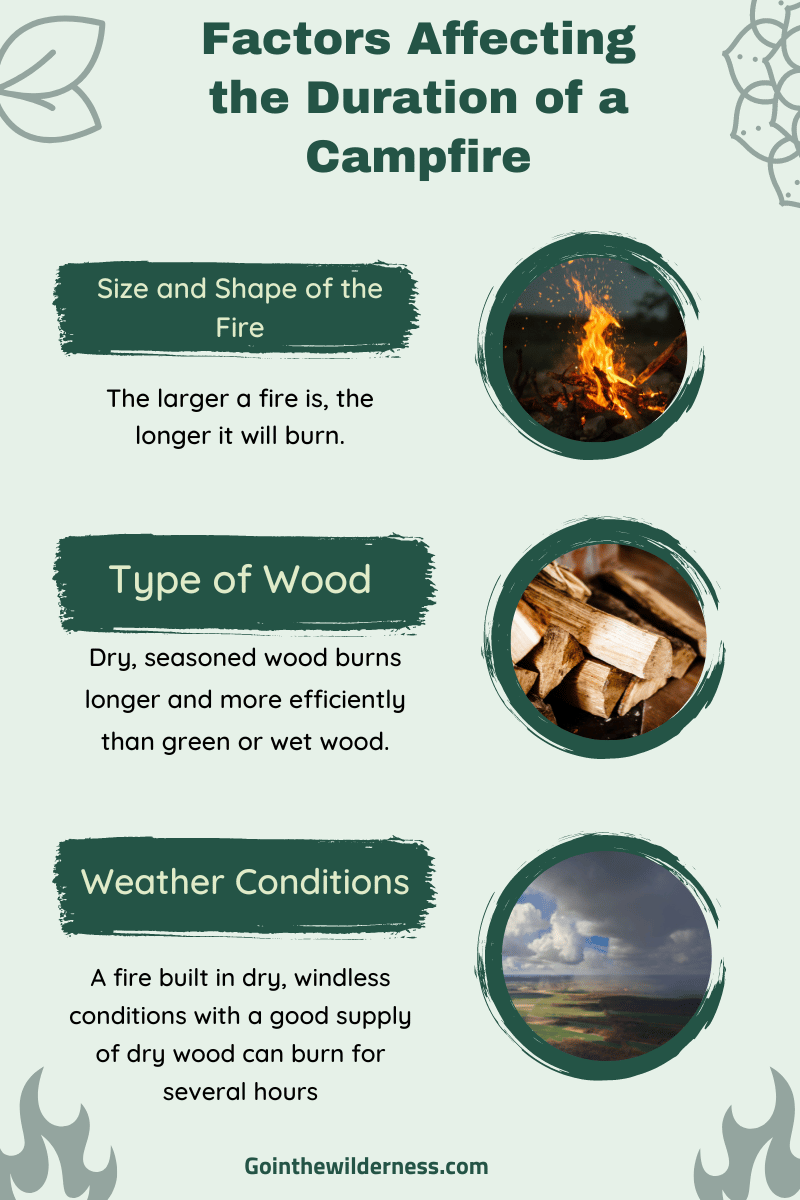
Size and Shape of the Fire
The larger a fire is, the longer it will burn, as the heat and flames are spread over a larger surface. It’s for this reason that you’re encouraged to keep feeding a fire with wood to make it bigger. Also, know that the shape of a fire can also affect how long it burns for—you’ll learn more about this in the next section.
Even if you get the size and shape of your fire right, however, it might still not burn properly if you choose the wrong type of wood. That takes us to the next factor affecting a campfire’s lifespan…
Type of Wood
Dry, seasoned wood burns longer and more efficiently than green or wet wood. Green or wet wood has a high moisture content and will burn poorly, producing more smoke and less heat. Dry wood, meanwhile, has had time to lose its moisture content, making it more combustible and less prone to extinguishing.
Did you know? A small fire made from dry, seasoned wood will burn longer than a large fire made from green, wet wood.
Weather Conditions
The environment can also affect the duration of a campfire. A fire built in dry, windless conditions with a good supply of dry wood can burn for several hours or even overnight. Conversely, a fire built in wet or windy conditions with wet or green wood will burn out quickly. Learn how to start a fire with wet wood.
Pro tip: A small amount of wind or airflow can—if not overwhelming—help a fire to burn more quickly by providing extra oxygen for the flames. You can achieve this yourself by fanning your fire, but make sure to do it in moderation or your fire will go out.
Maximizing the Duration of a Campfire
So you now know that weather, wood type, and fire size and shape can all influence how long a campfire lasts. In this section, you’ll learn—based on those three factors—how you can make a campfire burn for longer out in the wild.
Tip: Remember to follow local fire regulations and use caution when building and maintaining a fire.
Use Dry, Seasoned Wood
As mentioned already, dry, seasoned wood burns longer and more efficiently than green or wet wood. Avoid using wood from trees that have been cut recently or are still standing, as it will have a higher moisture content and will not burn as well. Instead, look for dead, fallen branches, or logs that have been lying on the ground for a while.
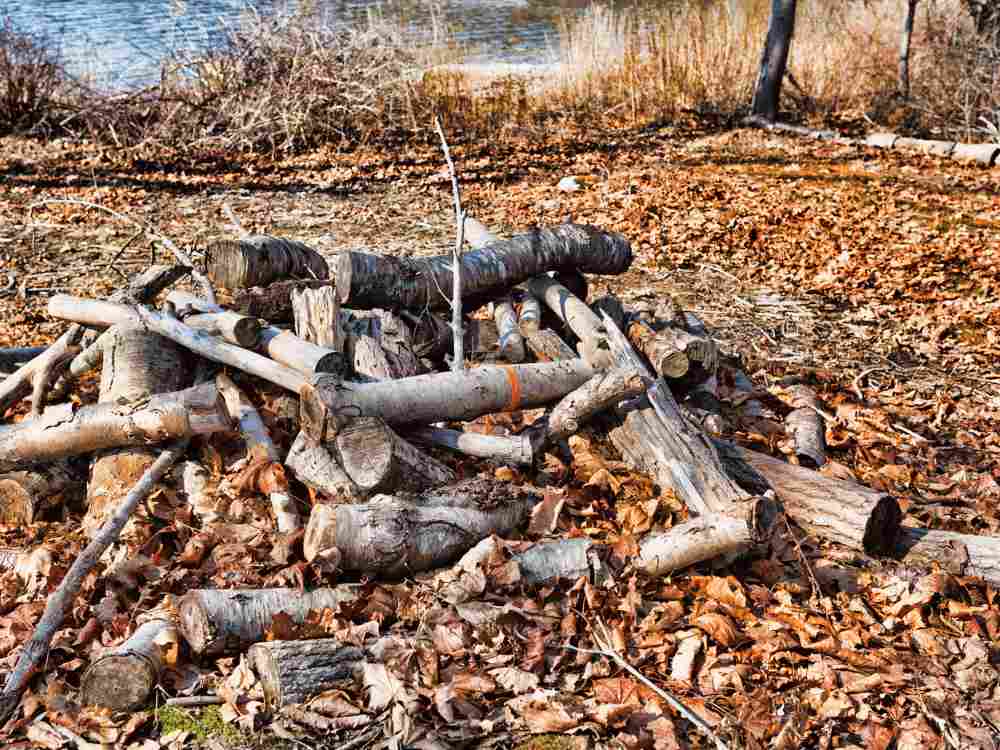
Tip: If you want to make sure you have a good supply of dry wood, you can gather it well in advance of your trip and store it in a dry place in the meantime.
Build a Fire Pit
This method helps you protect a campfire from wind and rain. Also, it makes it easier for you to control the size of your fire and add wood as needed. In order to build a fire pit, you first need to remove debris from your desired spot and dig a shallow hole with a machete or hunting knife in the ground there. Next, surround the hole with bricks or rocks to create a barrier, then construct your fire in the center of the pit.
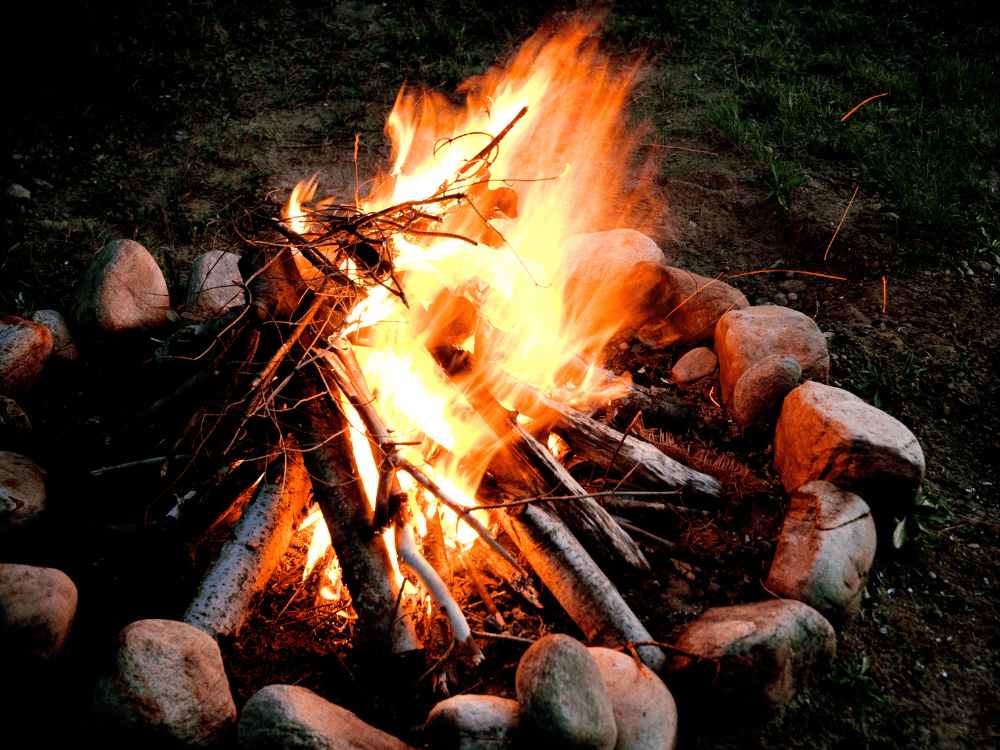
Use a Fire Starter
In the previous section, you learned that a larger fire will, in the right conditions, burn for a longer time than a smaller fire. But, as you’ll likely know, it’s often harder to get a larger fire going! Here is where a fire starter can help. Newspaper and kindling are common fire starters as they are easy to ignite and can get a fire going quickly—especially the larger logs that you’ll need for a large fire.
Tip: You can use a lighter, matches, flint and steel, or a magnesium block to light your newspaper or kindling. Avoid adding accelerants like gasoline or lighter fluid, as they can be dangerous and produce harmful fumes.
Build a Teepee Fire
A teepee fire is a type of campfire built by arranging small sticks or twigs in a teepee shape and lighting them from the top. A teepee shape helps your fire burn longer as it allows more air to circulate in and around.
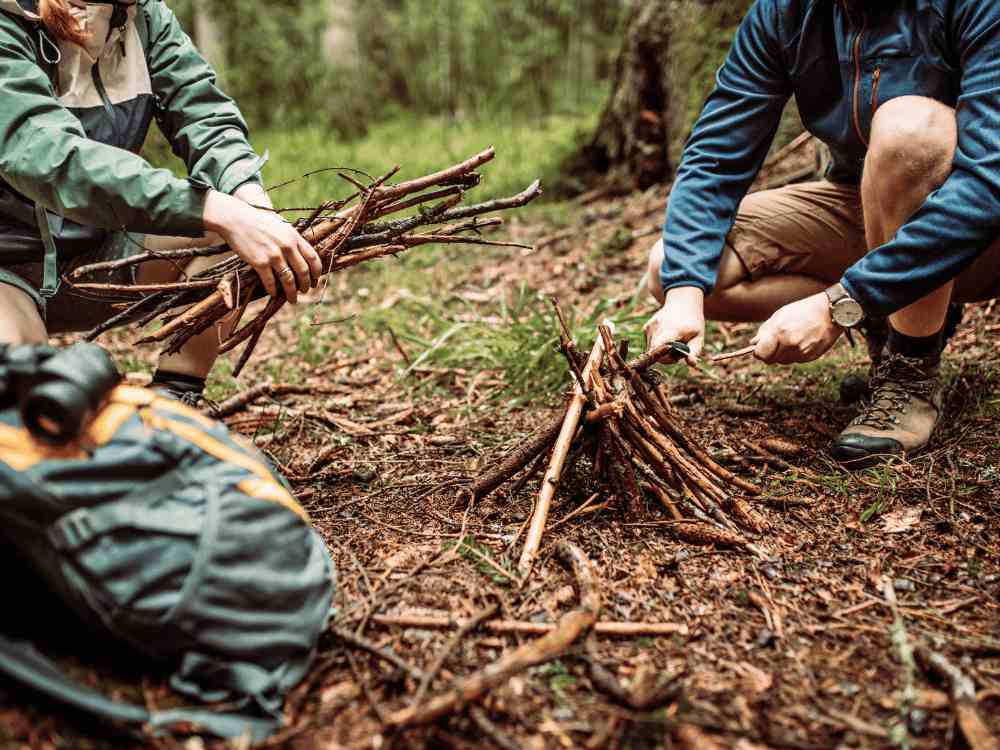
To build a teepee fire, begin by placing down your kindling and a few small sticks or twigs for the base. Arrange the small sticks into a teepee shape, then use larger branches or logs to reinforce the teepee structure. Once everything is in place, you can light the fire. Hopefully, it will last you a long time!
…And that’s how you can make a campfire last longer! By following these tips, you can enjoy your campfire’s warmth and light for as long as possible. So, the next time someone asks “how long does a campfire last?”, you know the answer: it depends on the weather, wood used, and the shape and size of the fire. Time to go test it out in the wild!
I am Bruno. Navigating the urban rush by day, I find peace under the stars by night. Alongside my loyal companion and co-adventurer Lilith, we explore the balance between city life and nature’s embrace. Through writing and films, I delve into bushcraft and the wild’s allure.
GointheWilderness is my bridge between these two realms, guiding you to reconnect with your innate wilderness.
Eden is here and now; join us in rediscovering it.
